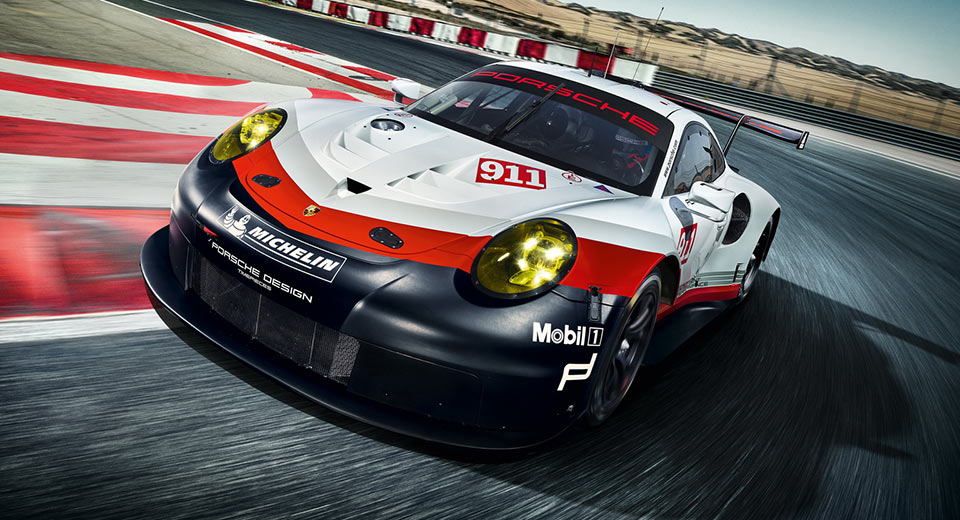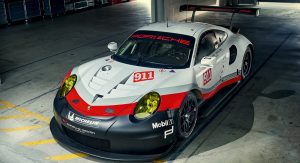Porsche unveiled the ultimate track weapon for its 2017 racing season.
The new 911 RSR is everything you expect from a racing Porsche and then some. It comes in a lightweight package, it complies with FIA’s Le Mans 24 Hours GT regulations, but more importantly, it features an ultra-modern flat six placed in front of the rear axle. In other words, unlike the regular, rear-engine 911s, the RSR is distinguished by a mid-engine layout.
The 4.0-litre naturally aspirated powerplant comes with racing characteristic, but it’s also fuel efficient – according to Porsche – thanks to its direct fuel injection and rigid valve drive. Even though it’s an N/A unit, the engine respects the LM-GTE regulations, and it’s capable of boasting 510 PS (502 hp) – delivered to the 31-centimetre-wide rear wheels by a six-speed gearbox with magnesium housing and paddle shifters.
“While retaining the typical 911 design, this is the biggest evolution by now in the history of our top GT model,” says Head of Porsche Motorsport Dr. Frank-Steffen Walliser.
Absolutely everything on the new 911 RSR is new, as the suspension, body structure, aerodynamics, engine, and transmission have all been developed from scratch.
What’s more interesting is that, for the first time, the race car features state-of-the-art assistance systems, including a radar-supported collision warning system which detects faster LMP prototypes even in no light conditions, so that unwanted occurrences can be avoided. Moreover, a new safety cage concept has been implemented, as well as a rigidly mounted racing seat fixed to the chassis.
While based on the 991’s factory design, the RSR gets a more bloated appearance to accommodate the various oversized race-spec components. With this change, the new 911 RSR also became more serviceable, as entire carbon-fiber body elements can be exchanged completely in a very short time thanks to quick-release fasteners.
















